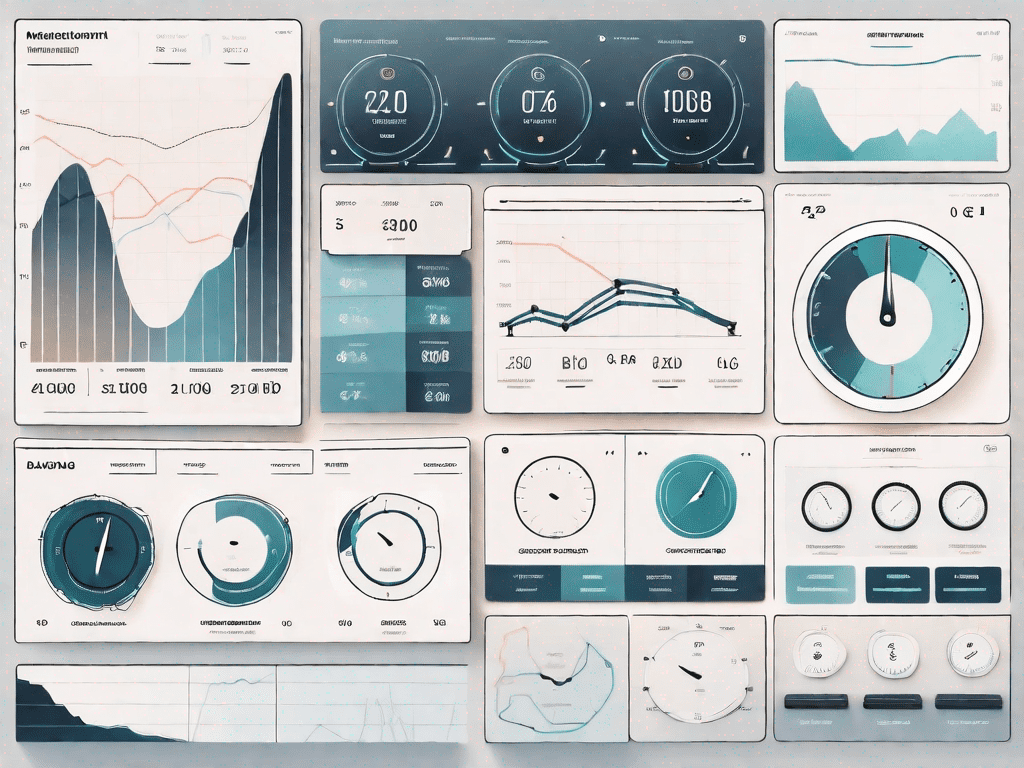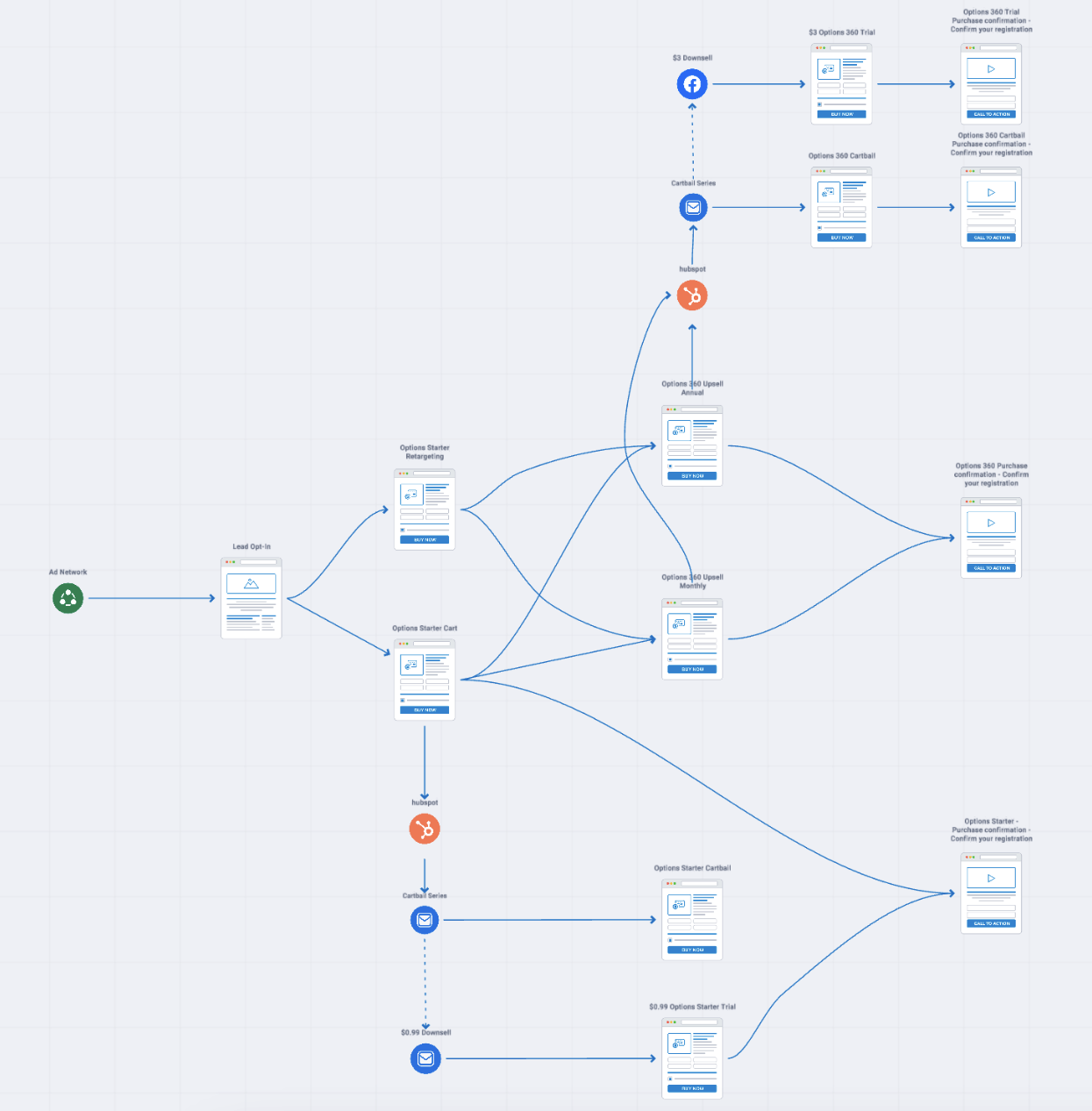If you’re interested in increasing traffic and generating leads, you’ve probably heard of the term “content marketing funnel.” But what exactly is it? Simply put, a content marketing funnel is a way to guide your target audience through the buying process with the use of strategic content. From creating brand awareness to fostering customer loyalty, a content marketing funnel can have a significant impact on your business’s success.
Understanding the Content Marketing Funnel
Definition and Purpose
At its core, a content marketing funnel refers to the stages a potential customer goes through on the path to purchasing a product or service from your business. By aligning your content with each stage of the funnel, you can move prospects further down the path towards conversion. The goal is to optimize your content so that it resonates with your audience and ultimately drives sales.
However, creating a content marketing funnel is not just about driving sales. It’s also about building relationships with your audience and establishing your brand as a trusted authority in your industry. By providing valuable, educational content at each stage of the funnel, you can position your business as a go-to resource for your target market.
The Stages of a Content Marketing Funnel
There are typically five stages of a content marketing funnel, each of which requires a unique approach:
1. Awareness
The awareness stage is where you introduce your brand to potential customers. This can include blog articles, social media posts, and paid advertising. The goal is to generate interest in your brand and make prospects aware of your products or services.
During the awareness stage, it’s important to focus on providing value to your audience without being too salesy. This could mean creating blog posts that answer common questions within your industry or sharing informative infographics on social media. By providing helpful content, you can establish your brand as a trusted resource and build a foundation of trust with your audience.
2. Consideration
In the consideration stage, prospects are evaluating whether or not your business is the right fit for their needs. This is where you can provide more in-depth information to help prospects make informed decisions. Content types that work well during this stage include product comparisons, customer reviews, and case studies.
During the consideration stage, it’s important to focus on building trust with your audience by providing detailed information about your products or services. This could mean creating product comparison guides or sharing customer testimonials on your website. By providing this type of content, you can help prospects make informed decisions and build a stronger relationship with your brand.
3. Conversion
The conversion stage is where prospects become customers. This is the end goal of the funnel, and it’s where you want to drive the most action. Conversion-focused content includes things like product demos, free trials, and special offers.
During the conversion stage, it’s important to focus on providing a clear call-to-action that encourages prospects to take the next step. This could mean offering a free trial or demo of your product, or providing a special discount code for first-time customers. By providing a clear incentive, you can increase the likelihood of prospects converting into paying customers.
4. Retention
The retention stage is often overlooked, but it’s crucial to building customer loyalty and engagement. Content types that work well in this stage include email newsletters, loyalty programs, and personalized recommendations.
During the retention stage, it’s important to focus on building a strong relationship with your customers by providing ongoing value. This could mean sending out a monthly newsletter with industry insights and updates, or offering exclusive discounts to loyal customers. By providing ongoing value, you can keep your customers engaged and increase the likelihood of repeat purchases.
5. Advocacy
The advocacy stage is where your customers become your biggest fans. This can include things like reviews, user-generated content, and social media sharing. By leveraging your happy customers’ voices, you can attract new prospects and build a strong brand reputation.
During the advocacy stage, it’s important to focus on encouraging your customers to share their positive experiences with your brand. This could mean asking for reviews on your website or social media profiles, or offering incentives for customers who refer their friends and family to your business. By leveraging the power of social proof, you can attract new prospects and build a strong community of brand advocates.
How it Differs from Traditional Marketing Funnels
A content marketing funnel differs from traditional marketing funnels in that it places a heavy emphasis on using content as a means of guiding prospects through the buying process. While traditional funnels may rely more heavily on paid advertising and other methods of outreach, a content marketing funnel prioritizes creating valuable, educational content that resonates with the audience.
By focusing on providing value to your audience at each stage of the funnel, you can build a stronger relationship with your customers and establish your brand as a trusted authority in your industry. This can lead to increased customer loyalty, higher conversion rates, and a stronger overall brand reputation.
Creating a Content Marketing Funnel Strategy
Identifying Your Target Audience
The first step in creating a content marketing funnel strategy is understanding who your target audience is. This requires a deep understanding of your ideal customer’s demographics, pain points, and motivations. By knowing your audience, you can tailor your content to meet their specific needs.
Setting Goals and Objectives
Once you’ve identified your target audience, it’s essential to set goals and objectives for your content marketing funnel. What do you want to accomplish with your content? Do you want to increase conversions, build brand awareness, or foster customer loyalty? By setting specific and measurable goals, you can better track the success of your funnel over time.
Choosing the Right Content Types
Choosing the right content types for each stage of the funnel is key to optimizing your efforts. For example, blog articles and social media posts work well in the awareness stage, while product demos and customer reviews are more suited to the conversion stage. By creating content that aligns with each stage of the funnel, you can move prospects closer to a purchase.
The Stages of a Content Marketing Funnel
Awareness Stage
During the awareness stage, your goal is to generate brand awareness and introduce your products or services to potential customers. Content types that work well during this stage include:
- Blog articles
- Social media posts
- Infographics
- Guest posts
Consideration Stage
In the consideration stage, prospects are evaluating whether or not your business is the right fit for their needs. Content types that work well during this stage include:
- Product comparisons
- Case studies
- Webinars
- Free trials
Conversion Stage
The conversion stage is where prospects become customers. Content types that work well during this stage include:
- Product demos
- Special offers
- Email promotions
- Purchase incentives
Retention Stage
During the retention stage, your goal is to build customer loyalty and engagement. Content types that work well during this stage include:
- Email newsletters
- Loyalty programs
- Surveys and feedback forms
- Personalized recommendations
Advocacy Stage
In the advocacy stage, your customers become your biggest fans. Content types that work well during this stage include:
- Customer reviews
- User-generated content
- Social media sharing
- Referral programs
Measuring the Success of Your Content Marketing Funnel
Key Performance Indicators (KPIs)
To measure the success of your content marketing funnel, it’s important to track key performance indicators (KPIs). These can include metrics such as website traffic, conversions, and engagement. By regularly monitoring your KPIs, you can make informed decisions about your content and make changes as needed.
Analyzing and Interpreting Data
Collecting data is only half the battle; interpreting it is equally important. By analyzing your data, you can identify trends and patterns in your audience’s behavior. This can help you tweak your content to better meet their needs and preferences.
Making Data-Driven Decisions
Finally, it’s important to use your data to make data-driven decisions about your content marketing funnel and overall marketing strategy. By using data to guide your decisions, you can optimize your funnel and drive better business results over time.
Creating a content marketing funnel may seem like a daunting task, but it can have a significant impact on your business’s success. By understanding the stages of the funnel, creating a solid strategy, and using data to inform your decisions, you can guide prospects from awareness to advocacy and beyond. With the right approach, a content marketing funnel can help you attract and retain loyal customers for years to come.



